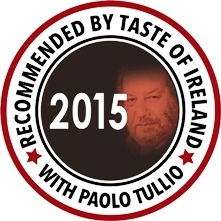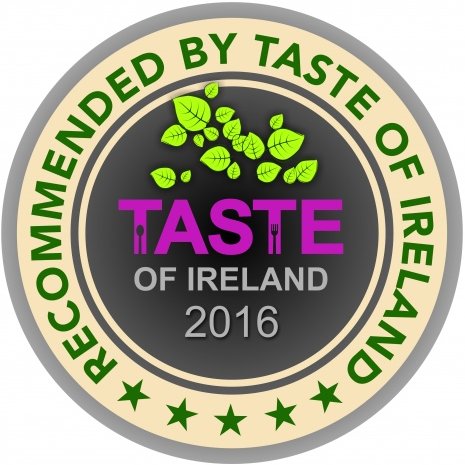Bianconi’s Italian restaurant is just across the road from Vincent’s hospital and it has a major plus, there’s a church car park almost next door. It’s pay-parking, but you’re only a few paces from the restaurant.
Bianconi’s is owned by a friend of mine, Antonio, who comes from the same valley in Italy as my family does.
We have a long-standing problem in Ireland when it comes to Italian cuisine. We have had close on a century of ‘Italian’ restaurants serving dishes that aren’t Italian, and as a result of this, many people have learnt to expect dishes served the Irish way.
The problem becomes evident when restaurateurs want to serve genuine, authentic Italian food. They find they get huge resistance from their regular customers, who have come to like it the old way. We could take an espresso as a good example. A proper espresso should be served at 180°F, not boiling.
Serve it like this in Ireland and it’ll be sent back. The Irish like espresso like their tea, as hot as possible. In Italy, an espresso might come just a third of the way up the demitasse. Try that here and you’ll be asked: “Where’s the rest of my espresso?” All that gets added is more boiling water. But it does point to the disconnect between local expectations and authenticity.
So, if a restaurateur wants to go down the authentic route, a choice has to be made. You can do it in one fell swoop, but you run the risk of alienating all your existing customers, or you can gently introduce one authentic dish after another.
My friend Paolo Fresilli went the direct route in his restaurant Via Veneto in Enniscorthy. He refused to cook anything that didn’t follow the traditional recipe. So no pasta with cream and chicken breasts, no cream in the carbonara, no pizza with pineapple. It took a while, but little by little he’s managed to persuade his customers that the real recipes are better.
Antonio, on the other hand, is more careful. He’s changing his menu a few dishes at a time, giving his customers time to adjust. Most nights, there’s a pasta special, and I’ve been impressed by two of these – tagliatelle with venison, and tagliatelle with pheasant. Of the two, I preferred the one with venison: it’s such a classic and the sauce works particularly well with tagliatelle.
There are two menus to choose from: an early bird and an à la carte. Midweek, the early bird menu runs all night, offering two courses for €19 or three for €23. Friday to Sunday, it runs from 5pm-6.30pm. The early bird has plenty of choices, six starters and eight main courses. Of these, about half are dishes you’d find on an Italian menu, and they are done well.
I was there again recently with an old friend, Anna Austin, who despite her married surname, is Italian. Italians are notoriously fussy in restaurants, always ready to complain, which might explain why the standards are high. Anna said several times how much she was enjoying the food. We both chose the special of pasta with venison, and I suggest that if you find it on a special, order it. It really was a good dish. The trick with a dish like this is to make the venison into a sauce, that is something that coats the pasta and sticks to it. What you don’t want is a plate of dry white pasta with chunks of meat on it. Here, the sauce was delicious, with just enough of a tomato base to blend with the venison.
For main courses, Anna had chosen the grilled chicken and avocado salad, which came with mixed leaves and tomatoes. It’s a dish that’s part Irish and part Italian, but I have to say it worked well and Anna was happy with her choice.
I couldn’t resist the guinea fowl, which had been de-boned and was roasted. It came with some very tasty pickled red cabbage, just the sort of strong taste you need with a winter warmer of a dish.
We both chose Bianconi’s homemade ice-cream for dessert, with Anna choosing mixed fruits and me going for the lemon. Well-made ice-cream is always a good way to end a meal, and for me, the lemon was exactly the right thing as a palate cleanser.
A couple of well-made espressos finished the meal and brought us a bill of €96.90, which included a bottle of Primitivo IGT from the heel of Italy at €27.





